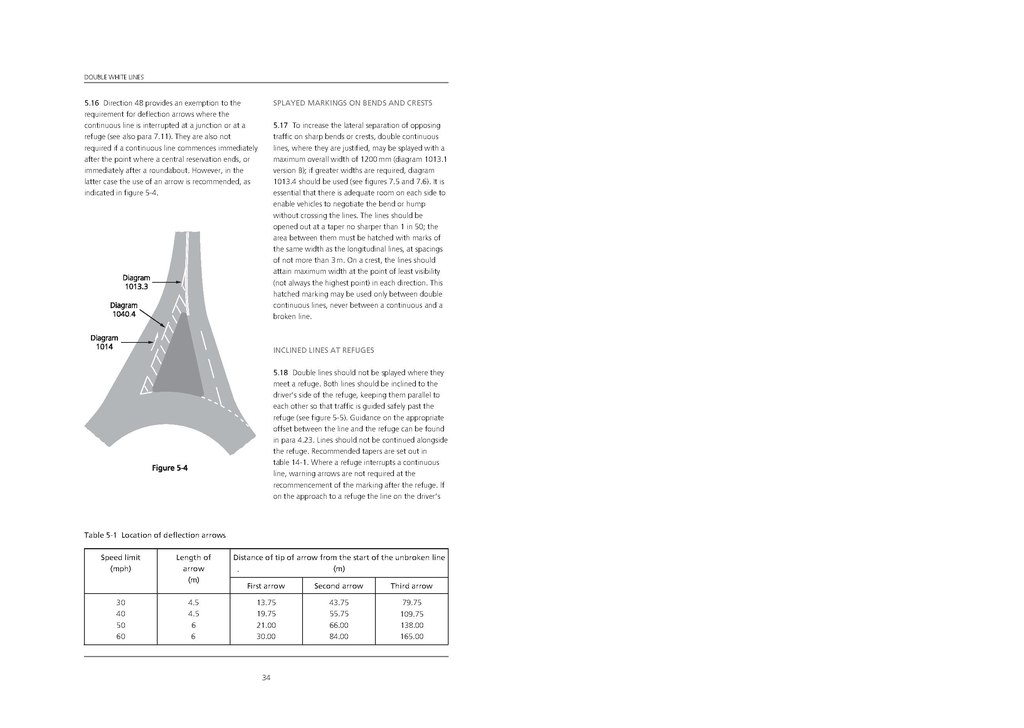5.16 Direction 48 provides an exemption to the requirement for deflection arrows where the continuous line is interrupted at a junction or at a refuge (see also para 7.11). They are also not required if a continuous line commences immediately after the point where a central reservation ends, or immediately after a roundabout. However, in the latter case the use of an arrow is recommended, as indicated in figure 5-4.

SPLAYED MARKINGS ON BENDS AND CRESTS
5.17 To increase the lateral separation of opposing traffic on sharp bends or crests, double continuous lines, where they are justified, may be splayed with a maximum overall width of 1200 mm (diagram 1013.1 version B); if greater widths are required, diagram 1013.4 should be used (see figures 7.5 and 7.6). It is essential that there is adequate room on each side to enable vehicles to negotiate the bend or hump without crossing the lines. The lines should be opened out at a taper no sharper than 1 in 50; the area between them must be hatched with marks of the same width as the longitudinal lines, at spacings of not more than 3 m. On a crest, the lines should attain maximum width at the point of least visibility(not always the highest point) in each direction. This hatched marking may be used only between double continuous lines, never between a continuous and a broken line.
INCLINED LINES AT REFUGES
5.18 Double lines should not be splayed where they meet a refuge. Both lines should be inclined to the driver's side of the refuge, keeping them parallel to each other so that traffic is guided safely past the refuge (see figure 5-5). Guidance on the appropriate offset between the line and the refuge can be found in para 4.23. Lines should not be continued alongside the refuge. Recommended tapers are set out in table14-1. Where a refuge interrupts a continuous line, warning arrows are not required at the recommencement of the marking after the refuge. If on the approach to a refuge the line on the driver's
| Speed limit (mph) |
Length of arrow (m) |
Distance of tip of arrow from the start of the unbroken line (m) | ||
|---|---|---|---|---|
| First arrow | Second arrow | Third arrow | ||
| 30 | 4.5 | 13.75 | 43.75 | 79.75 |
| 40 | 4.5 | 19.75 | 55.75 | 109.75 |
| 50 | 6 | 21.00 | 66.00 | 138.00 |
| 60 | 6 | 30.00 | 84.00 | 165.00 |
34
